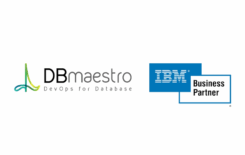In today’s threat landscape, identity theft is no longer just a consumer concern. It has become a strategic risk to enterprise infrastructure especially at the database layer, where the most sensitive and valuable data resides. For DBAs, DevOps leaders, and CISOs, this is a call to action. As perimeter defenses mature, attackers increasingly target internal access paths, leveraging credential theft and identity misuse to gain a foothold inside production environments.
While firewalls and endpoint detection systems are vital, they offer limited protection once an attacker masquerades as a trusted developer or DBA. Traditional access controls and logging fall short. Enterprises need a layered, DevSecOps-aligned strategy to close identity-based gaps in database access. DBmaestro offers a purpose-built solution to this exact challenge, aligning security, automation, and compliance in a unified platform.
This article examines the problem in depth, explores the vulnerabilities in current database workflows, and outlines a strategic framework to proactively mitigate identity theft risks powered by DBmaestro’s platform.
The New Face of Identity Theft: Inside the Database
Identity theft in enterprise environments is rarely about a stolen credit card. It’s about gaining unauthorized access by assuming the identity of a legitimate user usually through stolen credentials, compromised endpoints, or abuse of overly permissive roles. Once inside, attackers can view, exfiltrate, or manipulate sensitive data without raising alarms. In many cases, they use the same tools and interfaces that developers or DBAs use daily.
This is especially dangerous in the database layer, where:
- Access is often shared across teams using static or generic credentials
- Authentication mechanisms lag behind modern standards (e.g., many SQL clients lack MFA support)
- Privileged users can read or write data without triggering policy violations
- Non-production environments use production-like data without proper isolation
- Scripts and deployment tools contain hardcoded passwords or keys
The result? A highly attractive attack surface. Even if one development machine is compromised, an attacker may gain full visibility into production databases or sensitive test environments.

Why Traditional Controls Fail
Despite best intentions, many organizations rely on outdated practices that open the door to identity abuse:
-
Static Credentials and Shared Accounts
Database access is often managed through long-lived credentials stored in scripts, CI/CD pipelines, or shared across teams. These credentials, once leaked or misused, offer unrestricted access to anyone holding them.
-
Lack of Role Granularity
It’s common to see developers with production-level privileges or DBAs with full access to all environments. This violates the principle of least privilege and increases the blast radius in case of identity compromise.
-
Insufficient Audit and Attribution
Even when database changes are logged, the logs often fail to tie changes to named, authenticated users. This creates blind spots in forensics, accountability, and regulatory compliance.
-
No Sufficient Oversight
Most environments lack enforcement mechanisms that can block suspicious activity from happening. Instead, they rely on post-incident analysis, which is too little, too late.
The Case for a DevSecOps Approach to Identity Control
To address identity theft at the database level, organizations must rethink their architecture. This involves more than encryption or backup. It requires embedding security into the entire database delivery pipeline from access control and authentication to deployment and auditing.
Here’s what an effective strategy looks like:
- Identity-bound access to all environments
- Secrets management through centralized vaults
- Multi-factor authentication for database workflows
- Role-based access control (RBAC) at a granular level
- Just-in-time, policy-based approvals for elevated access
- Full traceability of every change to a human identity
- Automated enforcement of compliance and drift policies
This is where DBmaestro steps in not as a point tool, but as a platform built to unify database automation, security, and governance under a DevSecOps umbrella.
DBmaestro: Strategic Identity Protection for the Database Tier
DBmaestro tackles identity theft at its root by transforming how organizations manage database access and change processes. Its architecture supports a multi-step defense strategy that puts several secure layers between attackers and sensitive data.
Let’s explore the core pillars of this strategy:

Step 1: MFA and Federated Identity Through OIDC
DBmaestro integrates with enterprise identity providers using OpenID Connect (OIDC). This allows teams to enforce single sign-on (SSO) and multi-factor authentication (MFA) across all database activities both through the DBmaestro platform and in orchestrated CI/CD pipelines.
With identity federation, users are no longer local to the database or tool. Instead, they are authenticated through centralized, policy-controlled identity systems such as Azure AD, Okta, Ping Identity, or Google Workspace. This enables real-time access revocation and strong password policies while eliminating the risk of local credential misuse.
Step 2: Secrets Management via Vault Integration
DBmaestro doesn’t store passwords in configuration files or pass them through unsecured scripts. It integrates with any enterprise-grade vault solution, including:
- HashiCorp Vault
- CyberArk
- AWS Secrets Manager
- Azure Key Vault
At runtime, DBmaestro retrieves database credentials securely from these vaults. This removes the risk of credential exposure in source control, deployment artifacts, or CI/CD pipelines. It also ensures credentials are rotated and expire based on policy eliminating long-lived access tokens.
Step 3: Role-Based Access Control (RBAC) with Least Privilege
DBmaestro provides fine-grained RBAC across environments, projects, and actions. Each user is granted only the level of access needed to perform their role nothing more. Developers may be limited to non-production environments, while DBAs can be restricted to schema changes but not data extraction.
Combined with policy controls, this structure ensures that even if an account is compromised, the attacker’s reach is limited by predefined boundaries.
Step 4: Just-in-Time Access and Approval Workflows
Access to critical database functions can be tied to approval chains. For example, before a developer promotes a schema change to staging or production, DBmaestro can require manager or security team approval.
This approval workflow:
- Limits the window of elevated access
- Introduces human oversight at key points
- Prevents accidental or malicious changes
- Enforces separation of duties, reducing insider threat potential
Step 5: Change Attribution and Auditing
DBmaestro records every database action who did what, when, and why. Every change is tied to a named identity from the federated SSO system, not a generic service account or shared credential.
This audit trail helps organizations:
- Respond quickly to anomalies
- Prove compliance with regulations (SOX, HIPAA, PCI-DSS, etc.)
- Investigate incidents with clarity
- Prevent users from claiming plausible deniability
The platform also supports DORA metrics tracking, enabling teams to quantify deployment frequency, failure rates, and recovery times with full identity visibility.
Step 6: Automated Enforcement of Compliance and Drift Policies
Identity theft often leads to unauthorized or subtle changes to schema or configurations. DBmaestro prevents this through automated policy enforcement:
- Drift detection between environments
- Blocking unauthorized changes before they’re applied
- Requiring approvals for any deviation from the source-controlled database code
These guardrails help detect and contain identity abuse before it leads to data loss or regulatory exposure.
Beyond Prevention: A Framework for Accountability
Security is not just about stopping bad actors. It’s about creating a system where every user, every action, and every outcome is accountable. DBmaestro supports this by:
- Shifting control from individual users to policy-backed workflows
- Eliminating ambiguity in access control
- Providing real-time visibility for security teams
- Creating a defensible audit trail for internal and external auditors
This isn’t just operationally sound it’s foundational to zero trust and modern compliance models.
Final Thoughts
The database is the final line of defense in most breach scenarios. Once an attacker reaches it, the damage is usually swift and irreversible. Protecting the database layer against identity theft is no longer optional. It must be embedded into the way organizations build, deploy, and manage data-driven systems.
DBmaestro provides a clear path forward. Its integration with vaults, SSO, RBAC, and policy automation closes the identity gaps that attackers exploit. More importantly, it offers a framework that turns identity into a control point rather than a vulnerability.
For DBAs, DevOps leaders, and CISOs, this is the future of secure database operations measurable, traceable, and resilient by design.






